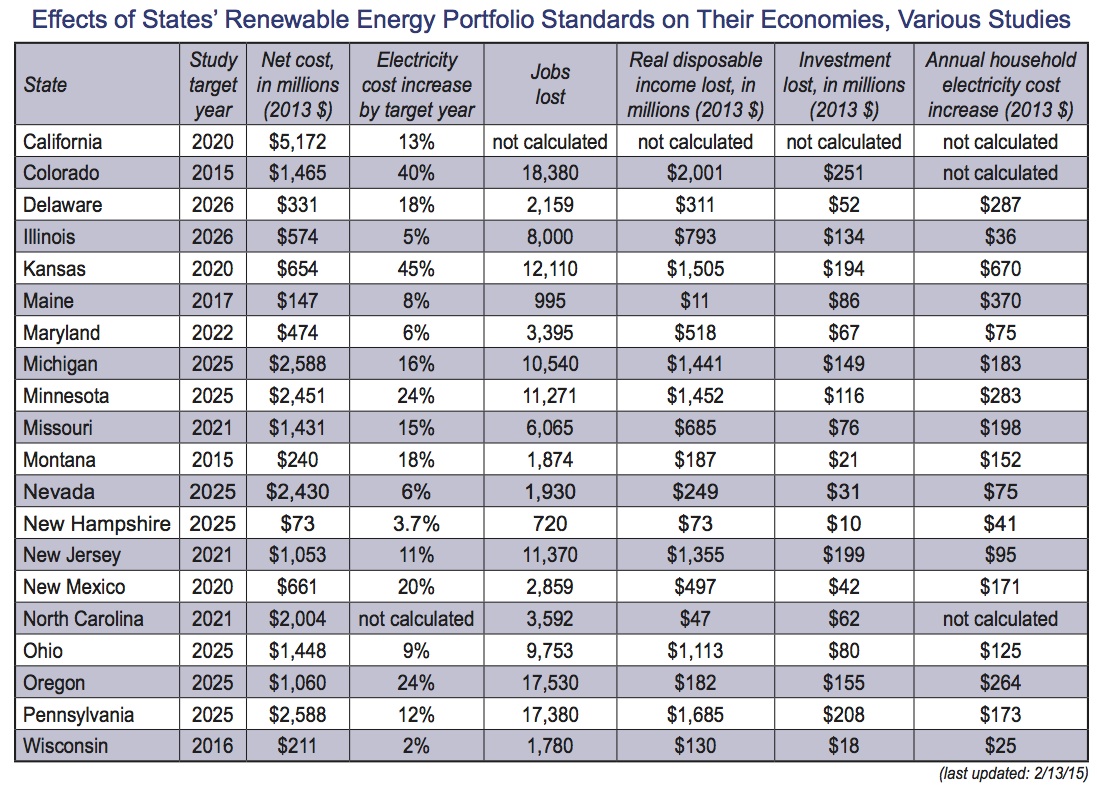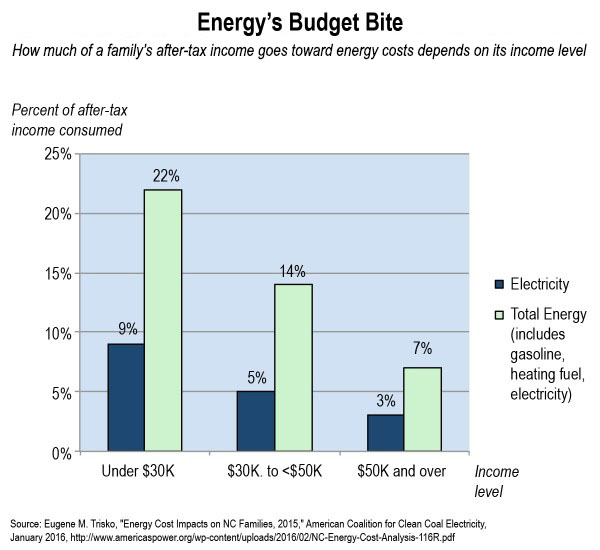A new report from the Beacon Hill Institute at Suffolk University (BHI) shows the costs that the New Hampshire, its employees, and its ratepaying families will bear to meet the state’s ambitious renewable portfolio standard (RPS) mandate that 24.8 percent of electricity sold to consumers be from renewable energy sources by 2025.
Renewable energy sources (especially nondispatchable sources such as solar and wind) are more expensive than conventional sources. Mandating their use imposes higher costs on businesses and households, demanding resources that otherwise would go into more productive uses throughout the economy.
The BHI study (pdf) estimated these costs (in 2011 dollars) from New Hampshire’s RPS mandate:
- $70 million more in electricity costs
- Electricity prices higher by 3.7 percent — costing households $40 more per year, commercial businesses $230 more per year, and industrial businesses $3,655 more per year
- 720 jobs lost
- $10 million lost in real disposable income
- $10 million lost in investment
I have added the New Hampshire study to my growing chart listing the effects of states’ RPS mandates on their economies (they have all been put in 2013 dollars; which is why New Hampshire’s numbers differ slightly in the chart from what is given above). Click the image for the full size:
Sources (pdfs): California; Colorado; Delaware; Illinois; Kansas; Maine; Maryland; Michigan; Minnesota; Missouri; Montana; Nevada; New Hampshire; New Jersey; New Mexico; North Carolina; Ohio; Oregon; Pennsylvania; Wisconsin.


